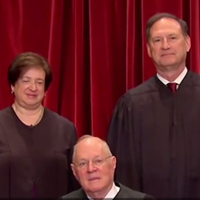Over the last 40 years, the state courts have become important players in the funding of America’s public schools. During this period, only a handful of states have escaped state court scrutiny over the allocation and amount of funding they devote to their K-12 schools. Initially, these state court orders focused on the allocation of money between school districts, requiring many states to change their education financing systems to more equitably distribute school funding. These “equity” cases were designed to eliminate wide disparities in per pupil funding among school districts arising from heavy reliance on local property taxes to finance the operation of the schools and the often significant differences between the tax bases of property-poor districts and property-rich districts. Beginning in the late 1980s, state courts also began to inquire into the “adequacy” of funding under state constitutional provisions requiring states to provide some level of education to their young citizens. Even though constitutional requirements are typically vaguely defined, if at all, plaintiffs were very successful in these adequacy lawsuits for a decade and a half, and a number of states were ordered to substantially increase their appropriations for K-12 education. These decisions are illustrated perhaps most dramatically by a New York case in which a Manhattan judge directed the state legislature to increase annual funding for the New York City public schools by $5.6 billion a year, an almost 40% increase. Needless to say, court involvement in the legislative appropriations process raises fundamental questions under the separation of powers doctrine, since decisions about educational policy and appropriations have historically fallen within the exclusive domain of the legislative and executive branches of government.
Recently, however, this trend has come to a grinding halt. Since 2005, there have been important adequacy case decisions in over a dozen states, and in none of them have the courts required further funding increases. Several courts, when deciding new adequacy cases, have either dismissed them based on separation of powers grounds or have ruled against the plaintiffs on the merits following a trial. Since 2005, courts in Oklahoma, Kentucky, and Oregon have dismissed such cases on motion, holding that control over school funding is the sole province of the elected branches of government. In Texas, Missouri, South Dakota and Arizona, the courts denied motions to dismiss, but after further hearings, rejected plaintiffs’ claims regarding inadequate funding of the schools. The one notable exception to this pattern is an October 2009 decision by the Colorado Supreme Court overturning a lower court decision which had dismissed an adequacy case on separation of powers grounds. The higher court reversed and sent the case back for a trial on the facts.
In addition, several other courts have ended their involvement in cases initially decided in favor of the plaintiffs. Some of these courts had retained jurisdiction for years or even decades over the “remedial” phase of the case. The most famous of these was the Abbott case in New Jersey in which the courts have issued over a dozen funding orders since the commencement of the case almost 40 years ago. In 2009, the New Jersey Supreme Court held that the state education funding scheme was constitutional and denied further relief to plaintiffs. Additional long-running “adequacy” cases in Wyoming and Massachusetts have also been dismissed in recent years.
Even in those few cases that have not completely rejected plaintiffs’ claims, the relief granted has been minimal, with no significant funding mandates, unlike the pre-2005 court orders. For example, in Alaska, the court ruled that state funding was adequate, but ordered the state to improve its monitoring of failing districts. In South Carolina, the court rejected claims of inadequacy in the State’s K-12 system of education, faulting only its pre-K programs.
While some have tried to define these court decisions as successes, in reality, the outcomes have been extremely disappointing for advocates of increased judicial intervention. Unlike the period from 1989 to 2005, when plaintiffs won almost every “adequacy” case that survived a motion to dismiss and went to trial, since 2005 they have not had a meaningful success in court.
The reasons for this abrupt change in the courts’ attitude are not clear, but the failure of judicial funding mandates to improve student achievement has likely been an important factor. While the state courts have not expressly stated as much, the United States Supreme Court recently addressed the impact of funding mandates on student achievement. In Horne v. Flores, the Court reversed a lower federal court order requiring the Arizona legislature to increase funding for programs directed at K-12 English language learners. The Court found that the “weight of the research” indicated that structural, curricular and accountability-based reforms, “much more than court-imposed funding mandates, lead to improved educational opportunities.” In reaching this conclusion, the Supreme Court relied upon the experience in state court “adequacy” cases, citing Schoolhouses, Courthouses, and Statehouses: Solving the Funding-Achievement Puzzle in America’s Public Schools, a recently released book by the authors of this post. In our book, we analyze student performance in the four states that have had the most dramatic increases in funding as a result of court orders – Kentucky, Massachusetts, New Jersey and Wyoming. As set forth in detail in the book, Kentucky (the first of the “adequacy” rulings), New Jersey (with almost four decades of court involvement in school funding), and Wyoming (where the courts instructed the state to fund a “visionary and unsurpassed” education for its students) have each seen their school spending levels blossom under court order. Notwithstanding these dramatic spending increases, we found that student performance has languished. The unmistakable picture in each of these states is that during a decade or more of court funding mandates, student performance, as measured by the National Assessment of Educational Progress (commonly referred to as the “Nation’s report card”), has not measurably improved relative to other states that did not have anywhere near the same influx of new school money.
The only state where performance has significantly improved while under court order has been Massachusetts. But here the story is more complicated, because Massachusetts combined strong non-financial remedial measures – strong standards, enhanced assessments, and strict accountability measures – with increased funding. Importantly, although accomplished after the entry of a court order, these deeper policy changes were not specifically ordered by the court, but instead represented creative reform efforts by the political branches.
The Massachusetts result reinforces our analysis: significant structural changes that focus incentives on improved achievement are more important than just providing additional funding. However, most courts that have historically entered into educational policy areas other than funding have discouraged real structural changes, focusing instead on the continuation of past policies, such as class size reduction or across-the-board salary increases for teachers, which carry with them increased funding.
In conclusion, the adequacy decisions of the last five years must be taken as strong evidence that courts no longer suppose that ordering increases in school funding leads to significant gains in student performance. This is surely reinforced by the 2009 Flores decision.




